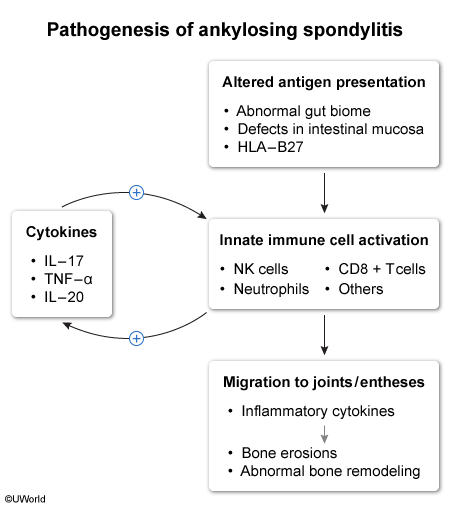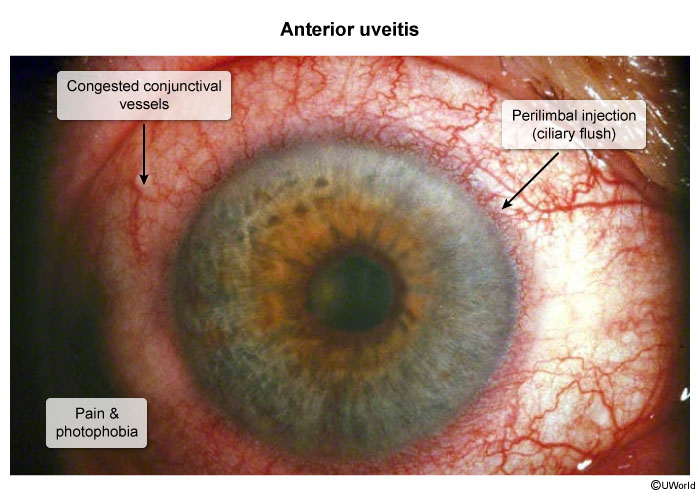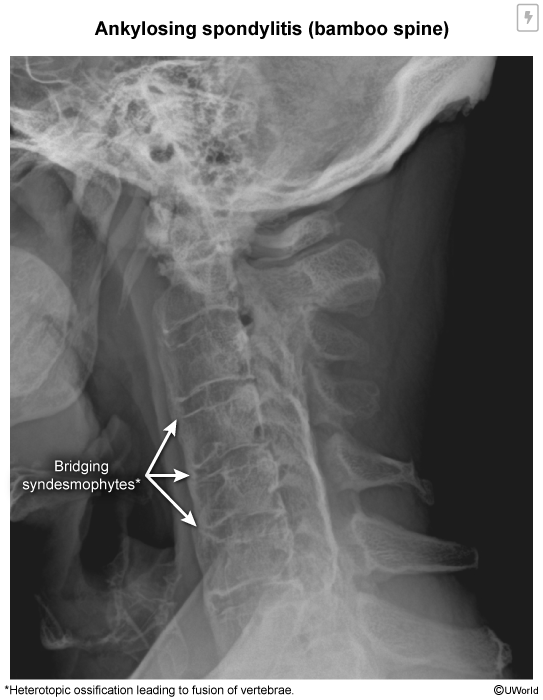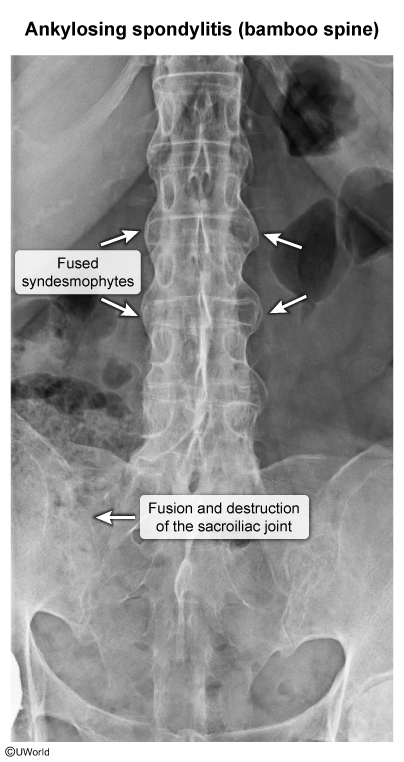Ankylosing Spondylitis
Article Sections
Introduction
Ankylosing spondylitis (AS) is a chronic inflammatory disease primarily affecting the axial skeleton, particularly the sacroiliac joints and spine. AS is the prototypical disorder of the spondyloarthritis (SpA) group and is characterized by the gradual onset of back pain, stiffness, and progressive fusion of the spine (ankylosis). Extraarticular manifestations, including uveitis, enthesitis, and cardiovascular involvement, are also common.
Under current nomenclature, AS can be categorized into 2 variant conditions, although many experts consider these to represent a spectrum of severity rather than distinct pathophysiologic processes:
- Radiographic axial SpA (R-axSpA): Characteristic abnormalities are visible in the spine and sacroiliac joints on plain film x-ray. This category includes most cases of classic AS.
- Nonradiographic axial SpA (NR-axSpA): Clinical features of AS are present, but abnormalities are not apparent on x-ray, although certain abnormalities may be detected on MRI of the spine.
Continue Learning with UWorld
Get the full Ankylosing Spondylitis article plus rich visuals, real-world cases, and in-depth insights from medical experts, all available through the UWorld Medical Library.
Figures

Images



